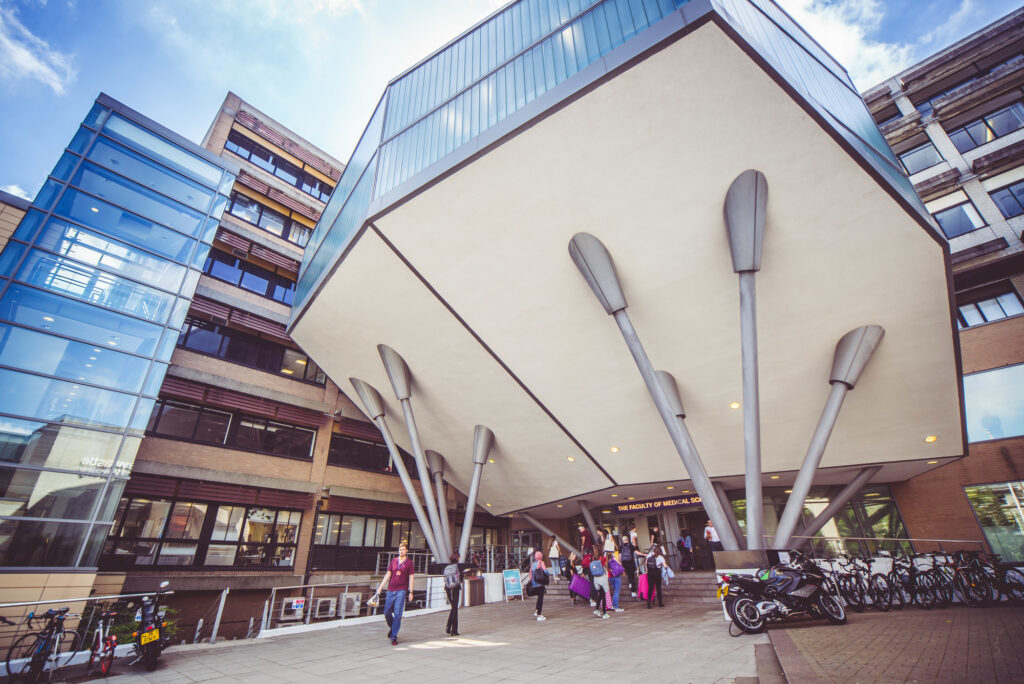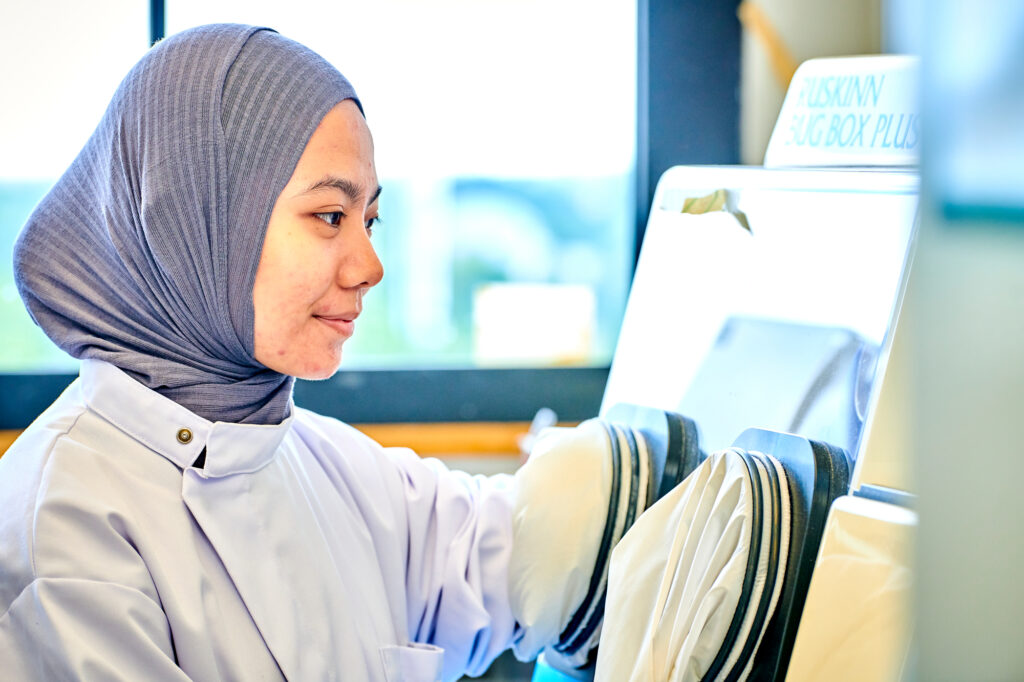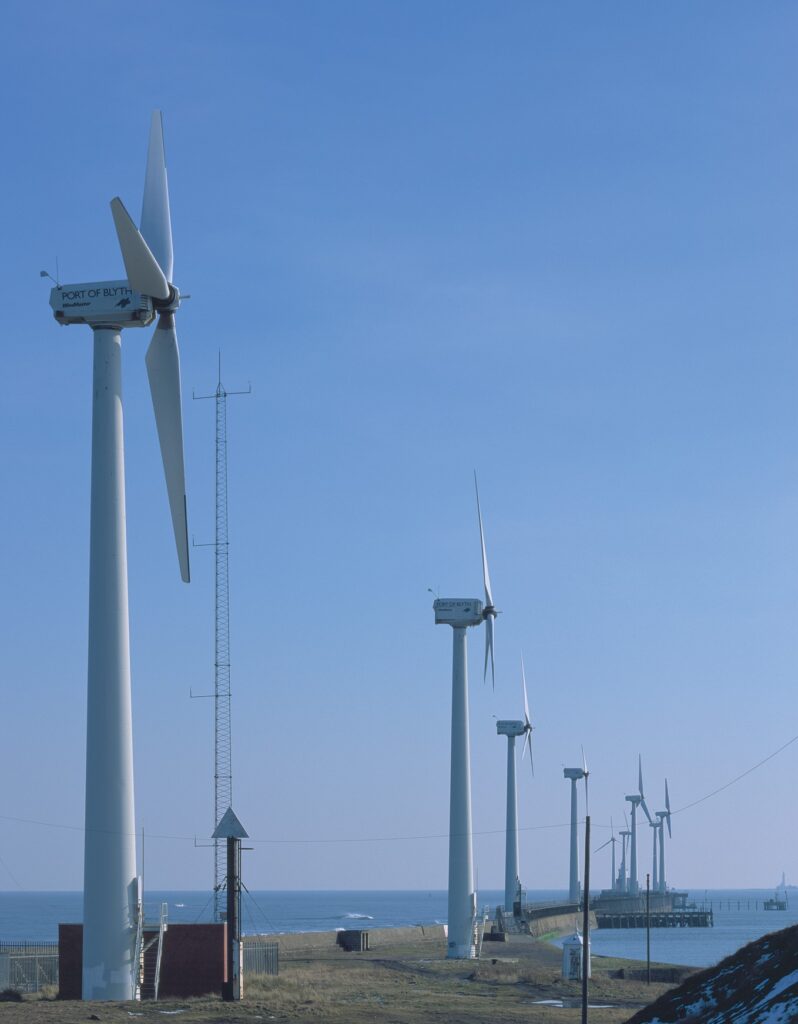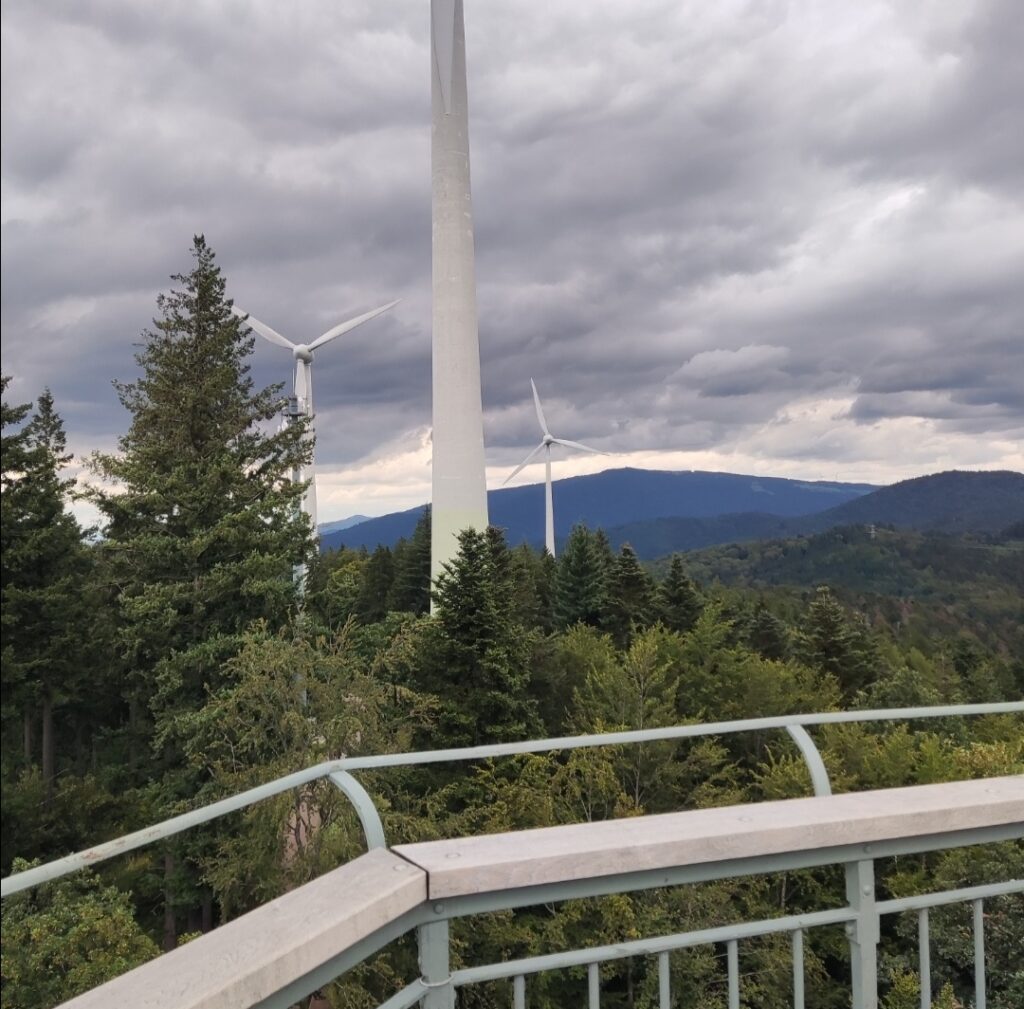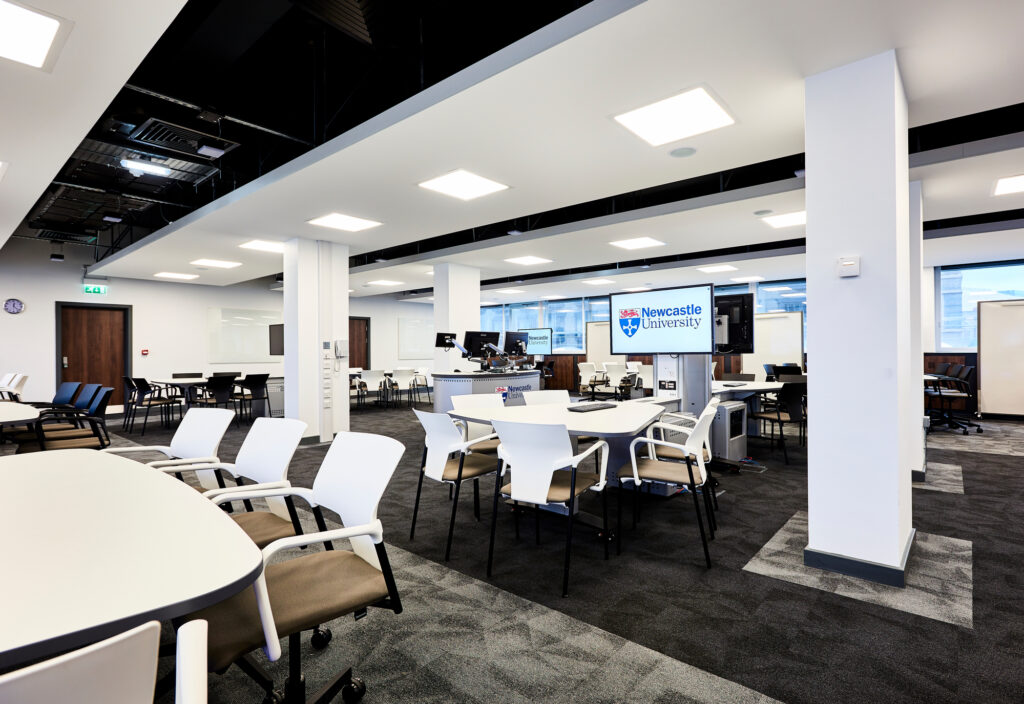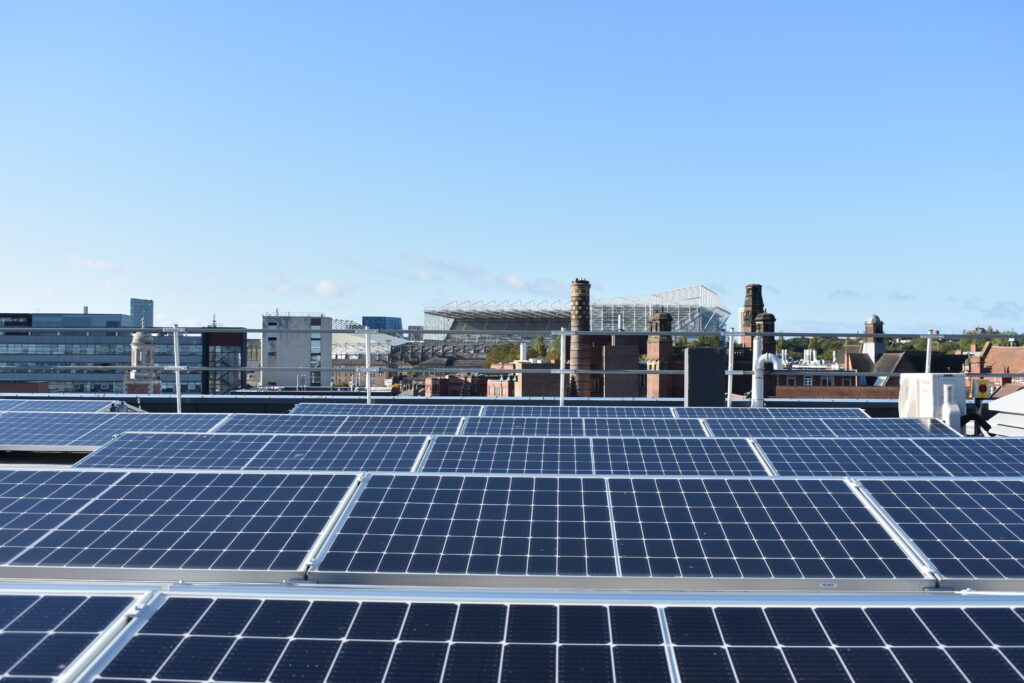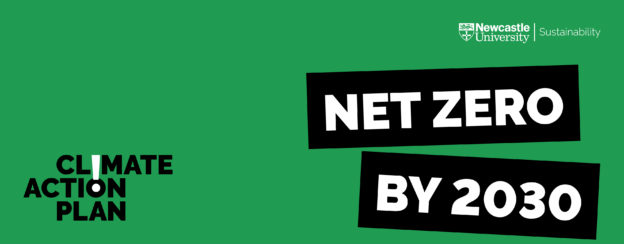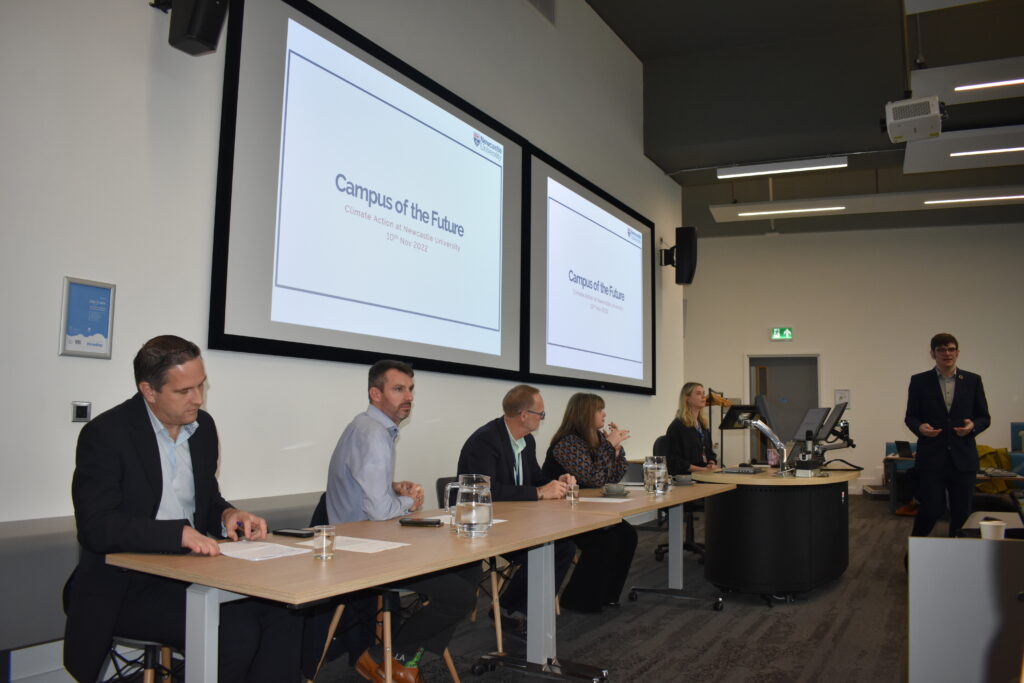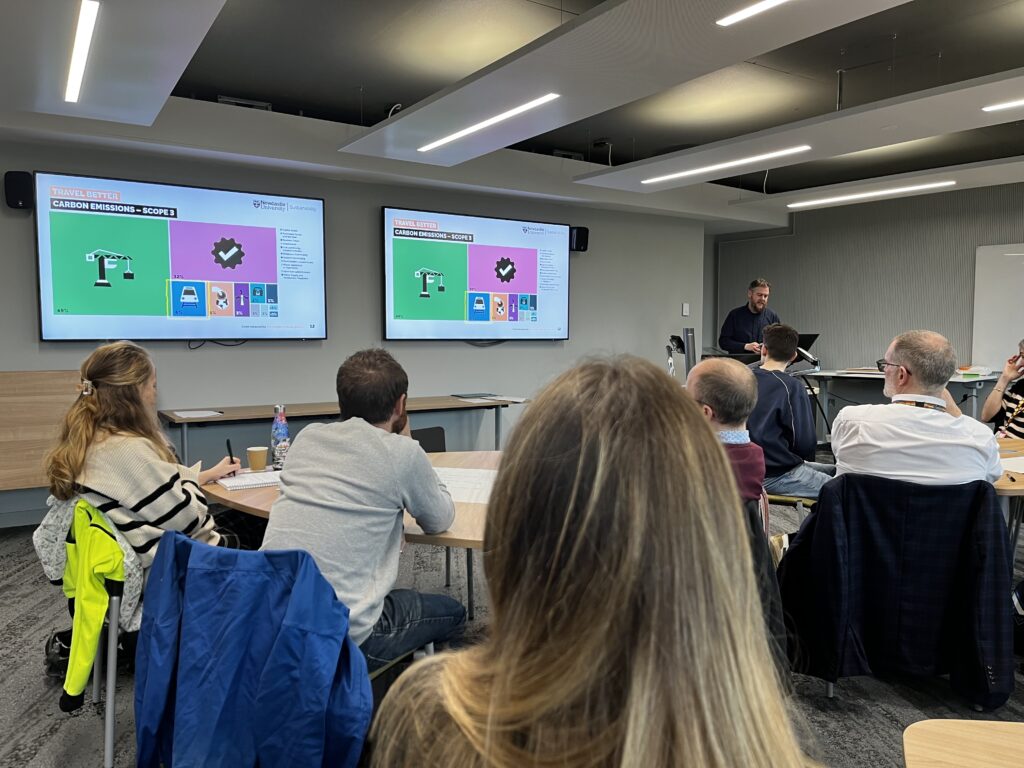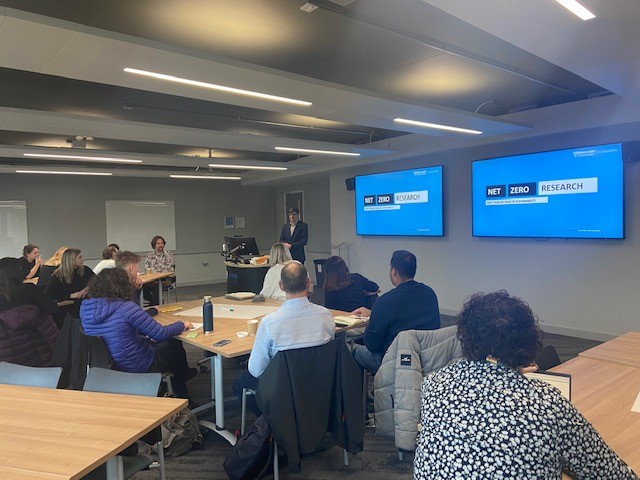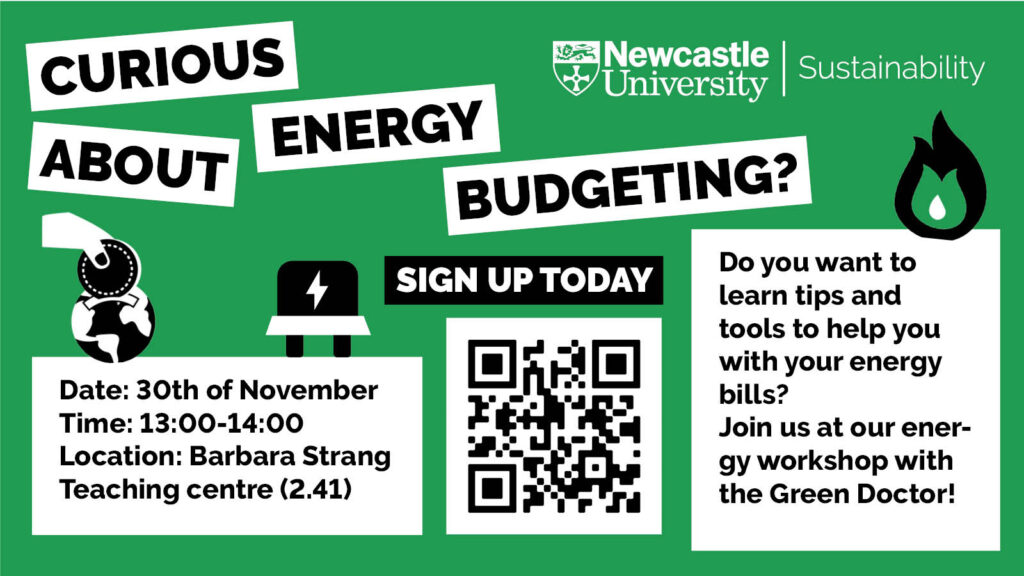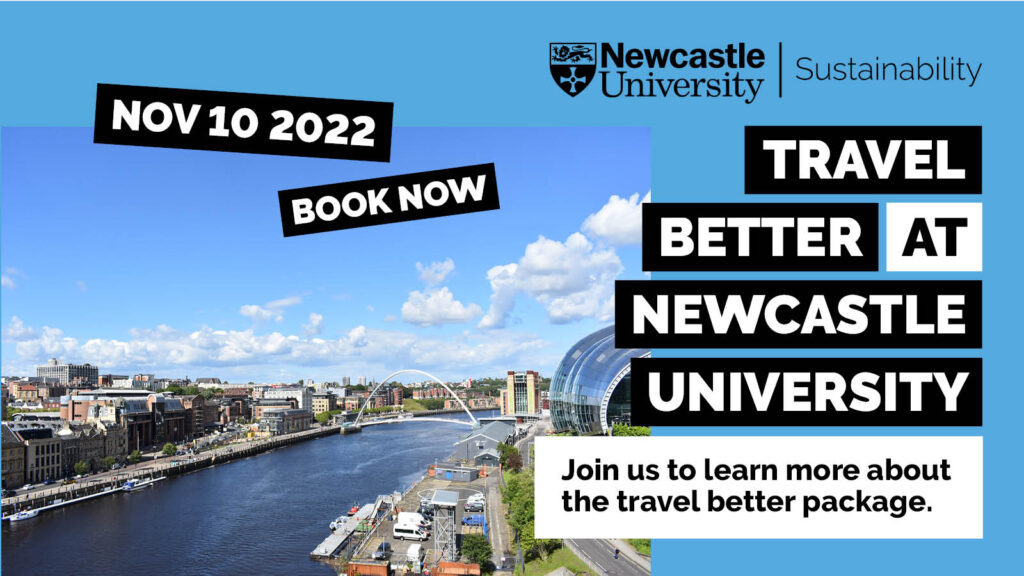2023 was a busy year for us in the Sustainability Team! We launched projects, ran events, helped the University to score highly in prestigious league tables, and welcomed new team members to continue and expand our work.
Delivering a sustainable Newcastle University is complex and multi-faceted work and requires a great deal of coordination and involvement between teams, colleagues, and students across the University. These efforts have led to sustainability improvements throughout our organisation, making our campus and community better for people and planet in a range of ways – read on for an overview of everything we’ve achieved together!
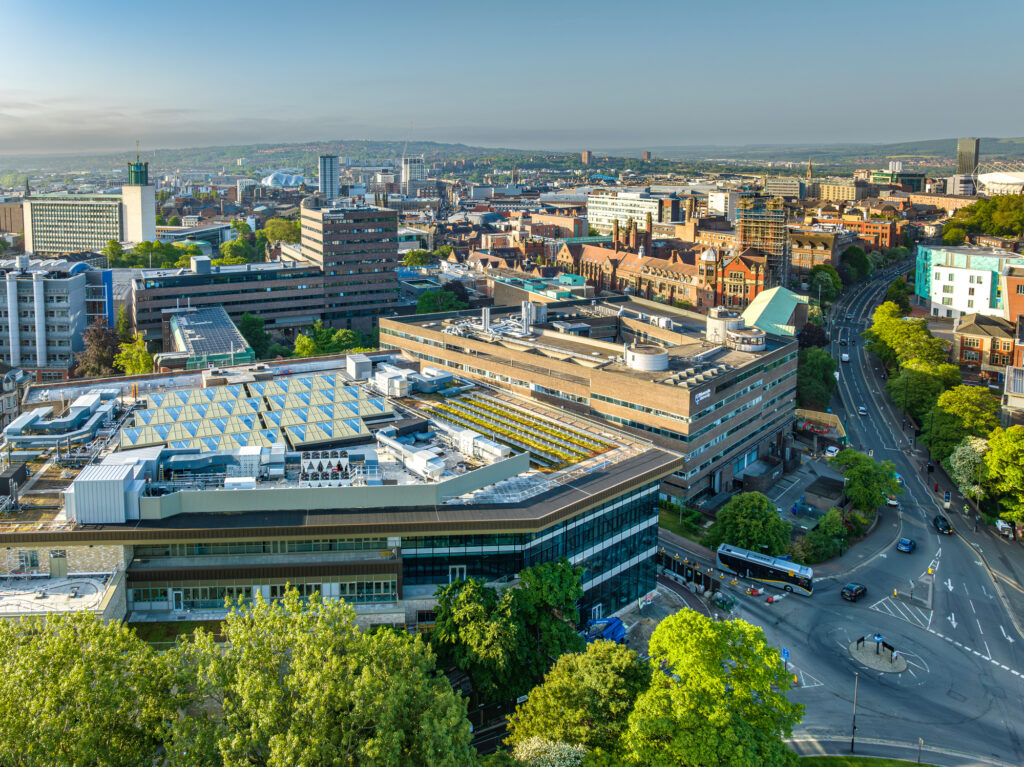
Awards and accreditations
The UN’s Sustainable Development Goals (SDGs) are a key priority for our university and so we were honoured to have contributed to the achievement of some exceptional scores in the Times Higher Education Impact Rankings. In the rankings, which are judged against the SDGs, Newcastle University placed top 25 in the world and 4th in the UK – a submission which takes a huge effort from our team and colleagues across the University!
That’s not all, however. We also kept our ISO 14001 and ISO 50001 accreditations for our Environmental Management System and Energy Management System, respectively. These technical accreditations reflect the care we put into our high-quality processes for managing the environmental impact of the University’s operations and we’ve now held both accreditations for almost a decade running.
Finally, 10 more labs gained Laboratory Efficiency Assessment Framework (LEAF) accreditation last year (including 5 at gold level!), doubling the size of our community of environmentally certified labs! If you work in a lab and are interested in joining LEAF, check out the information on our website.
Projects
We began several big projects with our colleagues last year, starting with the next phase of the University’s campus-wide solar photovoltaics (PV) project. This two-year programme will install solar PV panels on 32 academic buildings and accommodation sites, adding to our already expansive renewables network and reducing expected CO2e emissions by over 380 tonnes a year.
Additionally, we also began the installation of a biofuel combined heat and power (CHP) plant in Merz Court’s Energy Centre. This system uses greener biofuel to generate electricity while also harnessing waste heat to warm up our buildings – greatly reducing carbon emissions as compared to gas systems. These improvements will have a substantial impact as the Energy Centre provides district heating to a whole swathe of the campus, including the: Henry Daysh, Cassie, Stephenson, King Edward VII, Percy, and Old Library Buildings, plus, of course, Merz Court itself!

Engagement and events
Last year was a busy one for sustainability engagement too! Firstly, in January we launched our Sustainability Network to keep colleagues and students up to date on all things sustainability at our university. This community has now grown to 256 members and you can join them here. Additionally, speaking of mailing lists, our ongoing Furniture Reuse project hit 700 members!
Secondly, we’ve been working on this Sustainability blog throughout the year. We posted 30 blogs in all, offering updates, tips, and information on everything from wind power at the University to sustainable hacks around the house.
Finally, 2023 saw a whole range of events with environmentalism at their core, including:
- Sustainability Week – five days of sessions covering green infrastructure, climate anxiety and more,
- A Veganuary Bake sale to raise funds for biodiversity charities,
- Spudfest – a festival offering free food and dedicated to highlighting innovative agricultural research,
- Leave Newcastle Happy – our joint campaign with the City Council and Northumbria University to ensure that waste from the student move-out in summer is dealt with responsibly,
- The Dr Bike project, launched last summer to support active commuting to campus. In eleven sessions the project has managed to rehome 50 second-hand bikes and helped over 200 people with advice, resources, and repairs!
The team
We’ve seen some exciting changes to the team this last year. Firstly, Melissa Stephenson, previously a Sustainability Officer, became the University’s new Waste Manager – a vital role in the University that she’s quickly got the hang of! Additionally, our team has grown to a total of ten sustainability professionals with the appointment of:
- An Assistant Sustainability Officer – Charlotte Robson,
- A Sustainability Communications Placement – Evan Bromage,
- And two Sustainability Officers – Phoebe Sowerby and Jordan Heeley!
Thank you so much to everyone who got involved with sustainability last year, we couldn’t have done it without you! 2024 will bring fresh challenges and opportunities as we draw ever closer to our 2030 Net Zero target, so stay informed with this blog, the Sustainability Network, and our website and let’s make this year just as good as the last!

